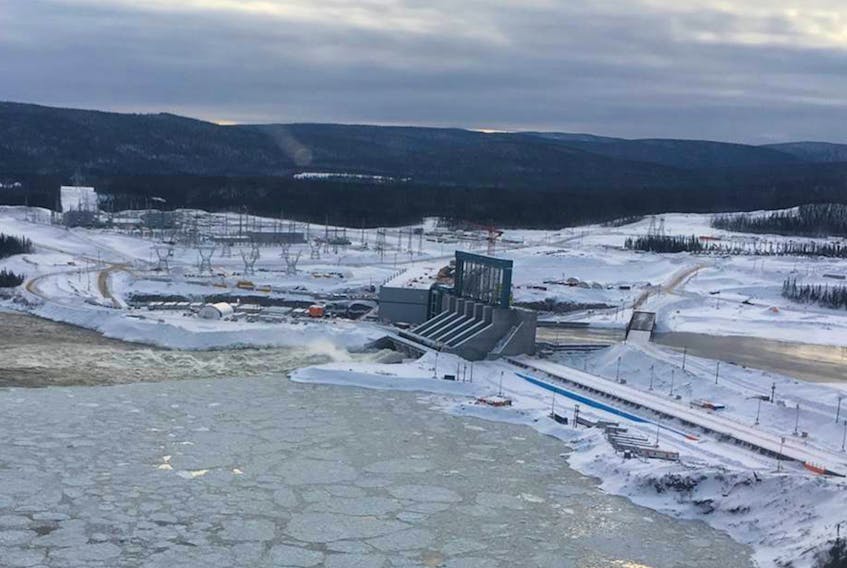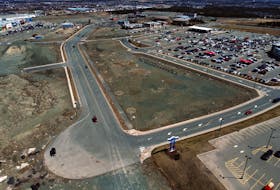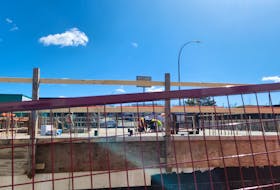HAPPY VALLEY-GOOSE BAY, N.L.
NEWFOUNDLAND AND LABRADOR
CANADA
The Nunatsiavut government is worried that time is running out for the province to implement the recommendations of the Independent Expert Advisory Committee to address health concerns of the Muskrat Falls Project.
Johannes Lampe, president of the Nunatsiavut government (NG), told the Labradorian they have been writing to the province and are getting “lip service.”
“We’re not getting a response that is satisfactory to us,” he said in an interview. “It’s difficult for the Labrador Inuit to believe the Premier’s commitment is nothing but an empty commitment. They are just intentionally delaying the response to the recommendations to ensure that there would not enough time to implement those recommendations before they flood the reservoir.”
The recommendations Lampe is referring to came out of the Independent Expert Advisory Committee (IEAC), created following an agreement between area governments at a marathon meeting at Confederation Building in St. John’s on Oct. 25, 2016.
“In less that two months it will be two years ago they committed to establishing something that will help to work on the concerns that we have regarding methylmercury entering into the wildlife that Labrador Inuit depend on,” Lampe said. “So we’re starting to believe they are intentionally not going to do anything until that time runs out.”
The IEAC’s committee was comprised of four voting members - the Innu Nation, the Nunatsiavut Government, Nunatukavut Community Council and the Affected Municipalities, as well as non-voting representatives of the provincial and federal governments and Nalcor.
The IEAC had four recommendations, which they released in April of this year. They recommended a public information campaign be undertaken, an independent body oversee the design and implementation of a monitoring program for the Lower Churchill Project, and the province, Nalcor Energy, Indigenous groups and the local populations negotiate an Impact Security Fund prior to full flooding.
The final recommendation, which did not achieve consensus among all voting members for IEAC, was that Nalcor Energy undertake targeted removal of soil and capping of wetlands in the future reservoir area before impoundment.
The Innu Nation is the only voting member opposed to the partial clearing of the reservoir, citing the fact it’s never been done before. Non-voting members Nalcor and the provincial government are also opposed.
The clearing has been estimated to cost between $409 million and $742 million, not including contingency funds, contractor risk premiums and costs associated with additional project delays. The clearing could potentially reduce methylmercury contamination in the food chain, which is the biggest concern.
NG commissioned an independent study by Harvard University in 2016 on the production of neurotoxin methylmercury as a result of the dam’s creation, and the potential human health effects downstream, independent of the provincial government and Nalcor. The results led to great concerns within the community and to large scale protests in Oct. of 2016. Those protests ended with the meeting that lead to the creation of the IEAC.
Lampe said with full impoundment of the reservoir coming in 2019 time is running out. He said all they are asking the government for is to follow through on the concerns that the Nunatsiavut government and Labrador Inuit have and the only way that they will be satisfied is if the provincial government does it before time runs out.
“We don’t have much time and we would like to see the premier and the government of Newfoundland and Labrador look at the concerns of the Labrador Inuit very seriously,” he said.
The Labradorian contacted the Department of the Environment and was told they are continuing to review the recommendations. A statement from Minister of the Environment Andrew Parsons said the report from the IEAC is highly complex and requires that government officials conduct an in-depth analysis of the four recommendations and the potential outcomes associated with each one.
“As not all of the IEAC’s recommendations were agreed upon by the voting IEAC members (the Provincial and Federal governments, and Nalcor were not voting members), it is critical that officials take all the information that has been gathered, as well as the overall recommendations from the committee into consideration,” Parsons said in the statement.
Lampe said they can’t wait much longer for the provincial government to take action before it becomes a moot point. He said it plays into the larger issue of reconciliation.
“The premier talks about the importance of reconciliation with indigenous peoples and that he would work with the Labrador Inuit and other indigenous peoples of Newfoundland and Labrador and we’re not seeing any respect for our concerns. Despite making those commitments to make things right for Labrador Inuit and other indigenous groups the government refusal to respond to the IEAC recommendations is certainly, to me, poor reconciliation.”









